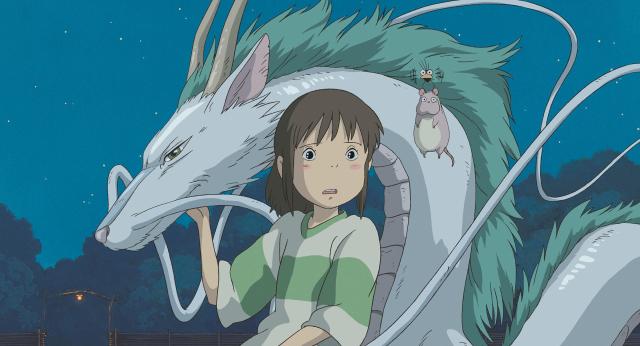
Now it all makes sense.
Studio Ghibli’s internationally acclaimed 2001 feature film Spirited Away is a timeless classic that can be rewatched time and time again, revealing new insights and discoveries with every viewing.
One secret that may have been hiding under our noses all along, though, is the true relationship between protagonists Chihiro and Haku. According to anime producer, lecturer and author Toshio Okada, who’s also the co-founder and former president of the Gainax anime production company, these two characters knew each other long before we see them meet in the movie, as he believes they’re sister and brother.
That’s not all, though. Haku isn’t just Chihiro’s brother, he’s her dead older brother, who drowned while saving her in a river.
This news came as a huge surprise to fans of the movie, but Okada provided a wealth of evidence to back up his claims, creating a strong argument that has many convinced the theory might be true.
The most compelling part of the argument is the notion that most viewers attempt to understand the story purely from the dialogue and take what the characters say on face value. In one of the film’s most climactic moments, for instance, Chihiro shares a childhood recollection about a river with Haku, which leads them to realise that Haku is the spirit of that same river, who carried her to safety when she fell in.
However, Spirited Away director Hayao Miyazaki is first and foremost an artist, who uses pictures to convey a story. And if we look at the images we see on screen, they tell a different story altogether.
During this climactic river-recall moment, Haku tells Chihiro she fell into the river while she was attempting to retrieve her shoe. However, the accompanying visuals show a hand being thrust into the water, and a white sleeve can be seen at the top of that arm. If this were Chihiro reaching in for her shoe, she ought to be wearing a white T-shirt, but as the camera dives beneath the surface, we see Chihiro beneath the water, and her shoulders are bare, showing she’s topless.
▼ If Chihiro was beneath the water, who was the person with the shirt thrusting their hand into the water?
“That’s Haku’s sleeve”, you might be thinking. And that would be a nice, neat explanation, if it weren’t for the fact that the accompanying notes on the storyboard for this moment read: “A child’s hand thrusts out suddenly“.
The director’s notes don’t specify who this child is, but if it were Haku or Chihiro, those names would normally be used, as they are during other key moments throughout the storyboard.
So what is the director trying to express with the images here? Well, according to Okada, the hand belongs to Chihiro’s brother, who reached in to save her, but he instead fell in and drowned. And because he sacrificed his life for someone else, he became the guardian spirit of the river.
While that’s a pretty strong argument in itself, there are other moments in the film to support this theory.
The river is underground
Chihiro says the river she fell in is all built over and “flows underground”, which can be read as a metaphor for her brother — the river — being buried underground.
Kamaji speaks of love
When Haku awakes and asks Kamaji where Chihiro is, the old man says, “It’s the power of love”. This comment on the love between the two characters can be read as a romantic type of love, but the love he’s referring to here is the one shared by brother and sister.
Chihiro’s mother told her the story
Chihiro prefaces her story about falling into the river with: “I don’t remember this but my mum told me about it”, which suggests her mother may well have left details about her brother out.
This would explain why Chihiro doesn’t remember Haku, as the pain her parents suffered could mean they no longer talk about him, so Chihiro grows up not knowing she ever had a brother.
Fans have also commented that Chihiro’s mother seems cold towards her daughter in the film and doesn’t make eye contact with her at the beginning, with many guessing this could be because she subconsciously harbours a sense of resentment towards Chihiro for the death of her son.
Haku knows Chihiro’s name
Chihiro doesn’t remember Haku but Haku, as the older sibling, remembers Chihiro and even knows her name without her having to tell him, saying he’s known her since she was little. This fits into the dynamic of a young child not really remembering an older sibling but an older sibling being able to recall a younger sibling in the case of a life-changing event.
Song lyrics
The film’s theme song, “Ano Hi no Kawa”, which literally translates to “The River That Day”, was composed by Joe Hisaishi. In the film, the song has no lyrics, but Miyazaki penned some lyrics as a guide for Hisaishi when he was creating the theme song, and they provide an interesting insight into the characters from the mind of the director:
“From a sunlit backyard, through a forgotten wooden door, along a path shaded by a hedge
The little girl running from afar is me
Sopping wet and crying, we pass each other
Following the footprints in the sandpit, even further
To the river that’s buried now
Water plants between the garbage are swaying
In that small river I met you
My shoe slowly washes away
And disappears, wrapped up in a small whirlpool
The dirt that conceals my heart clears
The fog that conceals my eyes vanishes
My hands touch the air
My feet catch the earth’s rebound
Me, who is living because of someone
Someone who was living for me
I went to the river that day
I went to your river”
That’s some powerful writing by Miyazaki right there, and while it clearly describes Chihiro’s near-death experience in the river, two of the most important lines to note are: “Me, who is living because of someone / Someone who was living for me”.
Is she alive because of her older sibling, and is that someone, mentioned in past tense, her brother?
There are even more elements to support the claim that Haku drowned while saving his sister Chihiro, but for that we’ll have to go on a fascinating deep dive into another film which had a big influence on Miyazaki: Night on the Galactic Railroad.
Miyazaki has been quoted as saying that he wanted to make his own version of Night on the Galactic Railroad one day, and if you look at the huge number of similarities between that 1985 anime, which was based on a 1927 Japanese fantasy novel by Kenji Miyazawa, and Spirited Away, this could very well be his version.
Both films feature long sets of stairs, white paper crane references, lanterns, masked parades, a solitary street light in the countryside, and even similar workshop scenes where a bespectacled old man sits at a high desk amongst machinery.
One of the biggest similarities, however, is Spirited Away’s train scene. In the 2008 book Ghibli no Mori to Ponyo no Umi (which translates to “Ghibli’s Forest and Ponyo’s Sea“), Miyazaki said he put the train scene into Spirited Away because of the train scenes in Night on the Galactic Railroad.
Miyazaki said he wanted to include a scene in Spirited Away where Chihiro falls asleep on a train and wakes up in darkness wondering where she is. She would knock on the conductor’s door to no avail until she eventually opened the train door to see the lights of the city floating “like a nebula in the night sky”. According to Miyazaki, this was his image of Night on the Galactic Railroad that he “wanted to put in, wanted to put in, wanted to put in”, but eventually he realised it didn’t fit with the story as it was “a different jigsaw piece”.
Still, Spirited Away got its magical train ride scene thanks to Night on the Galactic Railroad, and although the train ride is different to Miyazaki’s original vision for it, he incorporated some similar images and motifs here as a nod to the film that inspired him.
One of those images is a house that’s seen from the train. This solitary house looks remarkably similar in mood and composition to the house seen from the train in Night on the Galactic Railroad. This building is significant because that’s where the the passengers on the galactic railroad see someone who looks just like one of the main characters but none of them can quite remember who he is.
This loss of memory is because — spoiler alert! — the train is on a journey to the afterlife, where the lines between this life and the next are blurred, and that’s similar to what’s going on in Spirited Away.
▼ You can see the two houses side-by-side in this cued-up moment in Okada’s video below.
So what is Night on the Galactic Railroad about? Well, it features two main characters, Campanella and Giovanni, a couple of feline schoolmates, and on the night of a star festival being celebrated by the river, they go on a magical train ride to “the edge of the world” together.
You might want to skip this next bit if you don’t want to hear any major spoilers…
The characters onboard the magical train are actually spirits, and while most of them are cats, three of them are humans…who drowned in the sinking of the Titanic.
▼ Spirits on a train — sound familiar?
The trio consists of a young brother and sister and their tutor. The young boy has one shoe missing during the train ride, and it appears a short time later, floating down from the sky towards his tutor, who places it back on his foot.
Like any experienced artist, Miyazaki references other works to add extra layers of meaning to his stories, and the missing shoe connected to this drowning incident gives new meaning to Chihiro’s shoe drifting away in the river. It also brings up a slew of questions as well — is Chihiro dead, like the young passenger in Night on the Galactic Railroad? Is she on the brink of death? Is she visiting her dead brother in the spirit world?
These questions are hard to answer definitively, because, as is often the case with great works of art, it’s for the viewer to decide. However, I’ve been able to glean some extra insight into the possibilities by researching Night on the Galactic Railroad for more clues. The train ride that the passengers are on in that movie is actually passing through the galaxy in the realm between the living and the dead. And when the train stops and the passengers alight, they enter the spirit world.
What happens at the end of the movie? Well, while Campanella and Giovanni are both on the train, only one of them gets off, leaving the other to return to the world of the living without them.
▼ It’s a heart-wrenching parting that’s similar to the ending in Spirited Away.
In Night on the Galactic Railroad, the cat who gets off the train to live in the spirit world actually drowned during the lantern festival, when he jumped in to save a classmate who had fallen into the river.
This suggests that Haku, who lives in the spirit world, may also have drowned while performing the same selfless act.
If we look at the parallels between Spirited Away and Night on the Galactic Railroad, they extend right through to thematic concepts. Both films have absolute tearjerker endings, but they also sign off with a sense of hope — the cat who has to live without his friend has learnt life lessons on his journey to another dimension and now vows to live for the true happiness of everyone, while Chihiro, who has to live without Haku, learnt life lessons on her journey to another dimension and now knows the value of helping others.
Both instances recall the heartfelt sentiment about living for others in Miyazaki’s song lyrics: “Me, who is living because of someone / Someone who was living for me“.
So what does all this mean for the story of Haku, and will it lead to a reunion between him and Chihiro, as he promises, in future? Well, after doing a lot of research into the topic, I’ve come up with a theory of my own.
First off, because Ghibli films are largely translated rather than localised, there are a lot of unspoken cultural elements in the story that are evident to Japanese audiences but missed by foreign audiences, and one of those elements is the constant references to Buddhism.
One thing I noticed that’s been largely missing from the discussion overseas is the fact that although the characters say Yubaba steals their names, if you read between the lines, there’s another element at play here.
When a person passes away in Japan, Buddhist beliefs dictate that they are given a new name after death, so they can’t return to the world of the living when their real name is spoken. I believe this is why Haku can’t remember his real name, and if Chihiro is visiting her departed brother in the spirit world, it could explain why she is at risk of losing her name as well.
▼ Haku tells Chihiro, “Without your real name you’ll never find your way home.”
If Haku really was a boy who sacrificed his life for his sister, which led to him becoming the “guardian spirit” of the river, when he eventually recalls his name, his scales fall away to signify that he’s no longer bound to the spirit world. In other words, his spirit has been released from the river, and like a spell that’s been broken, he’s now one step closer to his next reincarnation.
If we consider this idea in the context of Buddhist beliefs about reincarnation, Haku’s selfless act in dying for Chihiro can be seen as an act of good karma that led to him being reborn outside of the mortal world as a river spirit, a demi-god in the heavenly realm. When he remembers his past with Chihiro, he recalls his name, and so he is now able to break his ties with Yubaba and the heavenly realm and “go home”.
While a lot of people may think it would be more desirable for Haku to be reincarnated as a god in the afterlife, the god realm (which sits above demi-gods) is believed to be the most pleasure-filled realm, which can lead to self-indulgence, attachment, and lack of spiritual pursuits, which ultimately means no nirvana.
▼ Kind of like, say, the way Yubaba and No Face live their lives.
This is why some Buddhists believe it’s more desirable to be reborn in the human realm, as it offers an opportunity to attain more karma, which can lead to nirvana.
From this point of view, the final farewell between the two characters in Spirited Away becomes even more poignant — when Chihiro asks, “Will we meet again somewhere?” Haku replies “I’m sure of it”.
Through this cycle of death and rebirth, an integral part of Japanese religious beliefs that isn’t translated in the dialogue for overseas audiences, Haku may very well be reborn in the human realm in future. There’s also the possibility that Chihiro, who has accrued a lot of good karma throughout her journey, and likely throughout the rest of her life now too, may also be reborn in the spirit world.
Either way, with both of them having grown through life lessons, an important part of the journey towards enlightenment, both these characters are now on a good trajectory to cross paths again in one of these higher realms in future.
If you think about it in terms of Christian values, it’s as if Chihiro visited heaven and learnt how to live a more selfless life, with the help of her angel brother. However, in the world of Buddhism, the journey of the soul doesn’t end after one cycle, it continues through a number of cycles, which opens up the opportunity for Chihiro and Haku to meet again and again.
Those wanting further proof that Buddhist ideals colour the story of Spirited Away should look no further than the train, which has “中道” (“middle road” or “middle way”) as its destination. “Middle Way” is a Buddhist term to describe an ideal way of life that avoids extremes of self-denial and self-indulgence, eternalism (living forever) and annihilationism (dying forever).
https://twitter.com/krn_mj/status/824502351893393408Kamaiji, who gives Chihiro her ticket to board the one-way train, also instructs her to get off at the sixth stop, which brings to mind the six realms of existence in which rebirth can occur.
▼ This suggests that Zeniba, and No Face at the end, exist in a different realm to Yubaba and the bathhouse.
I believe Chihiro’s journey through the different realms of existence — and the characters she meets along the way — is a deep reminder that what we do in this life affects what happens to us in the afterlife, so it’s important to help others and live well, not beyond one’s means. When you think about it, this is a recurring theme that’s not just evident in Spirited Away but in many films by Studio Ghibli.
Whether that means Chihiro’s parents go on to give birth to a young boy after the film finishes, bringing a happy ending to the story of Chihiro and Haku, well…that’s another theory for another day.
Source: Gentosha, Ghibli no Sekai (1, 2) YouTube/スタディおかだ【岡田斗司夫 切り抜き】 via Hachima Kikou
Featured image: Studio Ghibli
Insert images: Studio Ghibli (1, 2, 3, 4, 5, 6, 7, 8, 9, 10, 11, 12, 13, 14)
● Want to hear about SoraNews24’s latest articles as soon as they’re published? Follow us on Facebook and Twitter!

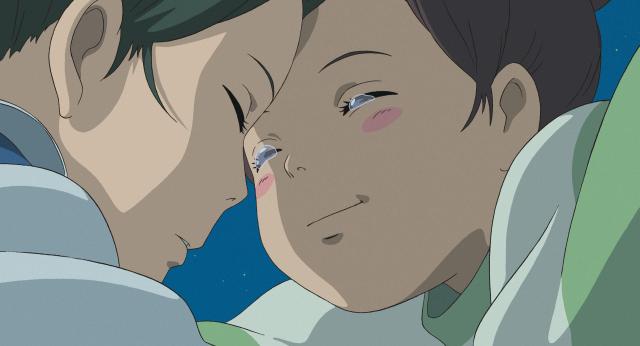
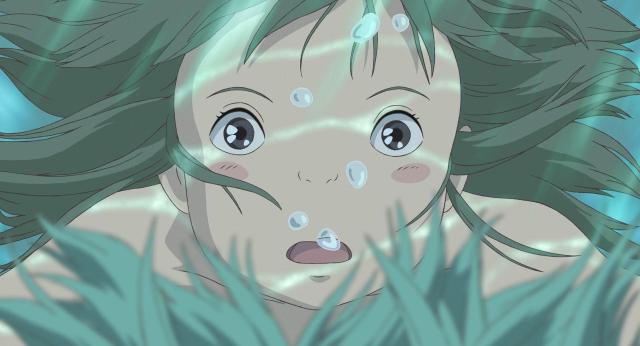
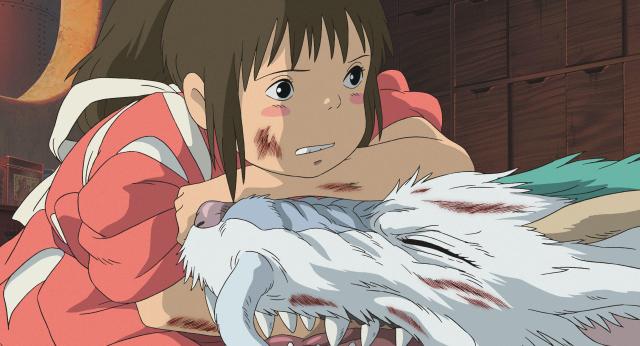
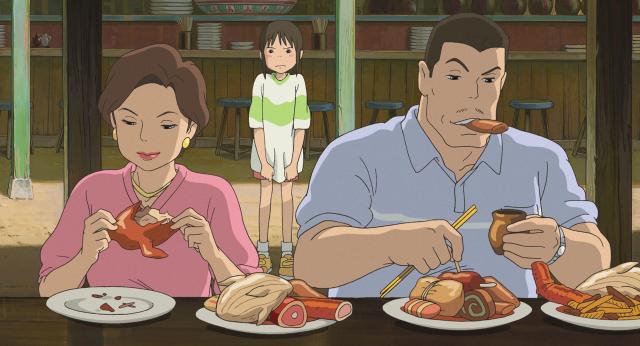

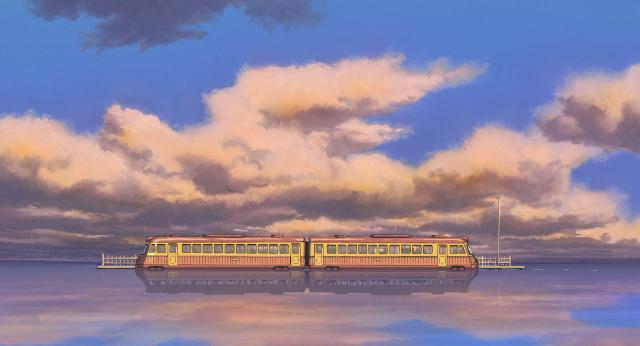
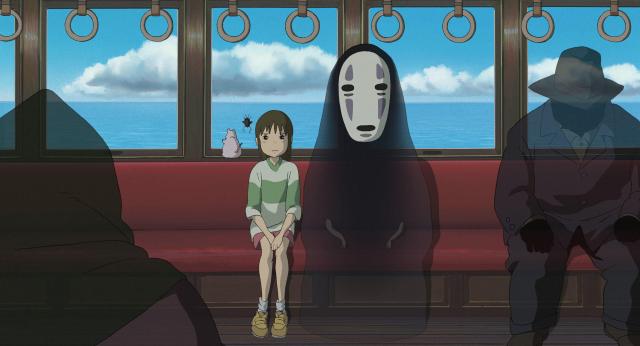
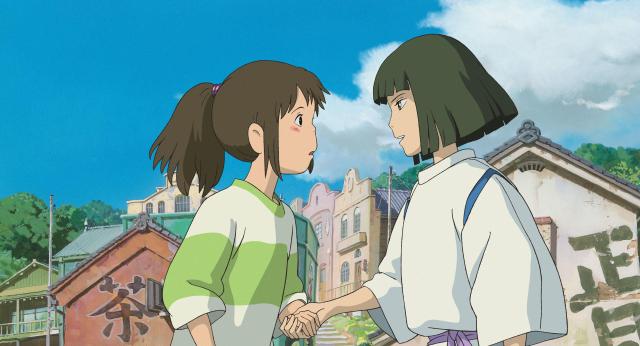
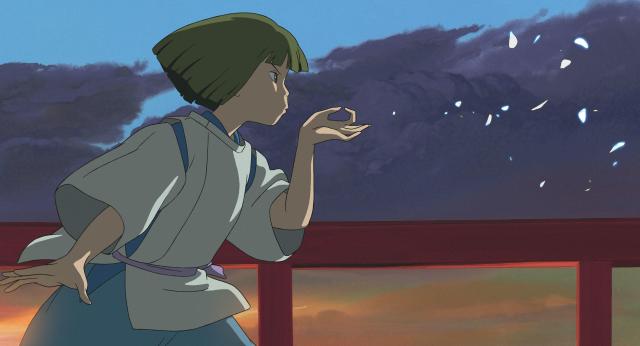
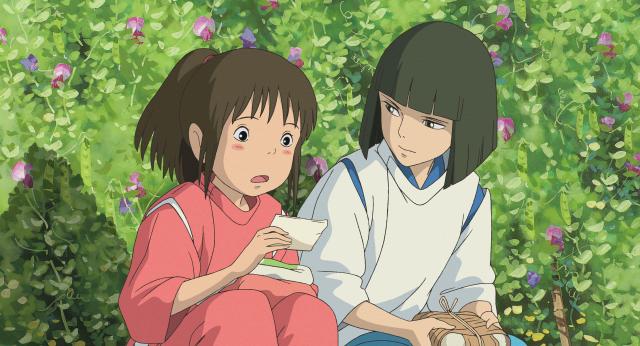
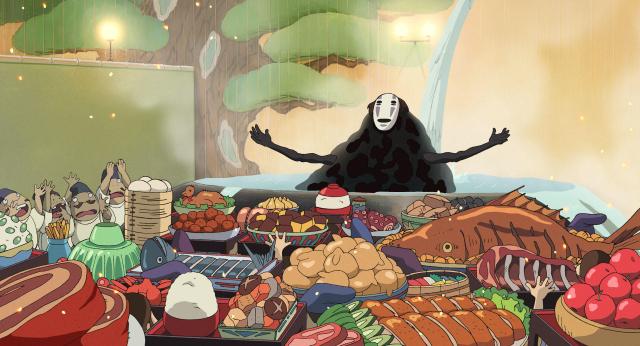
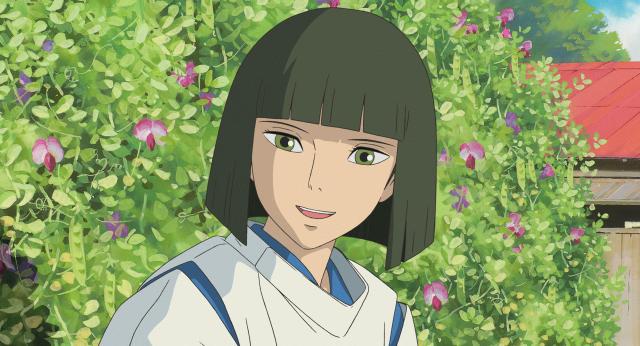
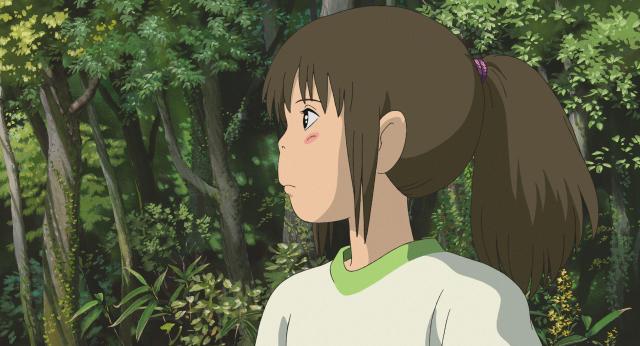
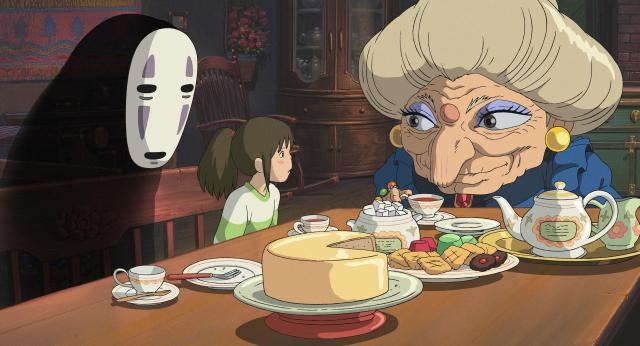
 Spirited Away bathhouse spirits steal the spotlight in new Studio Ghibli finger puppet collection
Spirited Away bathhouse spirits steal the spotlight in new Studio Ghibli finger puppet collection Yubaba and Zeniba pen stands from Studio Ghibli capture the magic of Spirited Away
Yubaba and Zeniba pen stands from Studio Ghibli capture the magic of Spirited Away First look at Studio Ghibli’s new Spirited Away live-action stage play
First look at Studio Ghibli’s new Spirited Away live-action stage play Studio Ghibli releases new Spirited Away kami collection
Studio Ghibli releases new Spirited Away kami collection Former AKB48 idol to take on lead role in live-action Spirited Away stage play
Former AKB48 idol to take on lead role in live-action Spirited Away stage play Foreigner’s request for help in Tokyo makes us sad for the state of society
Foreigner’s request for help in Tokyo makes us sad for the state of society Japanese city loses residents’ personal data, which was on paper being transported on a windy day
Japanese city loses residents’ personal data, which was on paper being transported on a windy day Seaside scenery, history, and so many desserts on Yokohama’s Akai Kutsu【Japan Loop Buses】
Seaside scenery, history, and so many desserts on Yokohama’s Akai Kutsu【Japan Loop Buses】 Red light district sushi restaurant in Tokyo shows us just how wrong we were about it
Red light district sushi restaurant in Tokyo shows us just how wrong we were about it French Fries Bread in Tokyo’s Shibuya becomes a hit on social media
French Fries Bread in Tokyo’s Shibuya becomes a hit on social media Osaka governor suggests lowering voting age to 0 to curb population decline
Osaka governor suggests lowering voting age to 0 to curb population decline Harajuku Station’s beautiful old wooden building is set to return, with a new complex around it
Harajuku Station’s beautiful old wooden building is set to return, with a new complex around it Should you add tartar sauce to Japanese curry rice? CoCo Ichi makes diners an unusual offer
Should you add tartar sauce to Japanese curry rice? CoCo Ichi makes diners an unusual offer Where Santa Claus buys his burgers: the world’s northernmost McDonald’s
Where Santa Claus buys his burgers: the world’s northernmost McDonald’s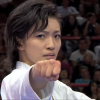 5 Japanese women who can kick your ass (in martial arts)【Women in Japan Series】
5 Japanese women who can kick your ass (in martial arts)【Women in Japan Series】 McDonald’s new Happy Meals offer up cute and practical Sanrio lifestyle goods
McDonald’s new Happy Meals offer up cute and practical Sanrio lifestyle goods Japanese ramen restaurants under pressure from new yen banknotes
Japanese ramen restaurants under pressure from new yen banknotes Studio Ghibli releases new action figures featuring Nausicaä of the Valley of the Wind characters
Studio Ghibli releases new action figures featuring Nausicaä of the Valley of the Wind characters New private rooms on Tokaido Shinkansen change the way we travel from Tokyo to Kyoto
New private rooms on Tokaido Shinkansen change the way we travel from Tokyo to Kyoto Tokyo Tsukiji fish market site to be redeveloped with 50,000-seat stadium, hotel, shopping center
Tokyo Tsukiji fish market site to be redeveloped with 50,000-seat stadium, hotel, shopping center Beautiful Ghibli sealing wax kits let you create accessories and elegant letter decorations【Pics】
Beautiful Ghibli sealing wax kits let you create accessories and elegant letter decorations【Pics】 Studio Ghibli releases Kiki’s Delivery Service chocolate cake pouches in Japan
Studio Ghibli releases Kiki’s Delivery Service chocolate cake pouches in Japan New definition of “Japanese whiskey” goes into effect to prevent fakes from fooling overseas buyers
New definition of “Japanese whiskey” goes into effect to prevent fakes from fooling overseas buyers Our Japanese reporter visits Costco in the U.S., finds super American and very Japanese things
Our Japanese reporter visits Costco in the U.S., finds super American and very Japanese things All-you-can-drink Starbucks and amazing views part of Tokyo’s new 170 meter-high sky lounge
All-you-can-drink Starbucks and amazing views part of Tokyo’s new 170 meter-high sky lounge More foreign tourists than ever before in history visited Japan last month
More foreign tourists than ever before in history visited Japan last month New Pokémon cakes let you eat your way through Pikachu and all the Eevee evolutions
New Pokémon cakes let you eat your way through Pikachu and all the Eevee evolutions Disney princesses get official manga makeovers for Manga Princess Cafe opening in Tokyo
Disney princesses get official manga makeovers for Manga Princess Cafe opening in Tokyo Sales of Japan’s most convenient train ticket/shopping payment cards suspended indefinitely
Sales of Japan’s most convenient train ticket/shopping payment cards suspended indefinitely Sold-out Studio Ghibli desktop humidifiers are back so Totoro can help you through the dry season
Sold-out Studio Ghibli desktop humidifiers are back so Totoro can help you through the dry season Japanese government to make first change to romanization spelling rules since the 1950s
Japanese government to make first change to romanization spelling rules since the 1950s Ghibli founders Toshio Suzuki and Hayao Miyazaki contribute to Japanese whisky Totoro label design
Ghibli founders Toshio Suzuki and Hayao Miyazaki contribute to Japanese whisky Totoro label design Doraemon found buried at sea as scene from 1993 anime becomes real life【Photos】
Doraemon found buried at sea as scene from 1993 anime becomes real life【Photos】 Tokyo’s most famous Starbucks is closed
Tokyo’s most famous Starbucks is closed One Piece characters’ nationalities revealed, but fans have mixed opinions
One Piece characters’ nationalities revealed, but fans have mixed opinions We asked a Uniqlo employee what four things we should buy and their suggestions didn’t disappoint
We asked a Uniqlo employee what four things we should buy and their suggestions didn’t disappoint Princesses, fruits, and blacksmiths: Study reveals the 30 most unusual family names in Japan
Princesses, fruits, and blacksmiths: Study reveals the 30 most unusual family names in Japan Did this animated Korean movie rip off Ghibli’s ‘Spirited Away’?
Did this animated Korean movie rip off Ghibli’s ‘Spirited Away’? Ghibli director Hayao Miyazaki shares secret to help improve your anime art skills
Ghibli director Hayao Miyazaki shares secret to help improve your anime art skills Spirited Away train station and submerged tracks attract Ghibli fans around Japan
Spirited Away train station and submerged tracks attract Ghibli fans around Japan Think you know your weird news from Japan and Asia? Take our weekly quiz and find out!
Think you know your weird news from Japan and Asia? Take our weekly quiz and find out! Spirited Away meals and merchandise coming to new Studio Ghibli exhibition in Tokyo
Spirited Away meals and merchandise coming to new Studio Ghibli exhibition in Tokyo Spirited Away bathhouse spirits become self-righting dolls in new Studio Ghibli collection
Spirited Away bathhouse spirits become self-righting dolls in new Studio Ghibli collection Spirited Away voice actors from China recreate iconic scenes from the anime film
Spirited Away voice actors from China recreate iconic scenes from the anime film Ghibli fan wins Guinness World Record for the largest collection of Studio Ghibli memorabilia
Ghibli fan wins Guinness World Record for the largest collection of Studio Ghibli memorabilia Studio Ghibli producer dishes the dirt on Hayao Miyazaki, Your Name, and their next big project
Studio Ghibli producer dishes the dirt on Hayao Miyazaki, Your Name, and their next big project Japanese city changes into beautiful Spirited Away lookalike once a year, and it’s happening now
Japanese city changes into beautiful Spirited Away lookalike once a year, and it’s happening now Who is No Face? Hayao Miyazaki finally gives us the answer
Who is No Face? Hayao Miyazaki finally gives us the answer Animal Crossing fan recreating all of Ghibli’s Spirited Away in New Horizons, and it’s incredible
Animal Crossing fan recreating all of Ghibli’s Spirited Away in New Horizons, and it’s incredible Studio Ghibli reveals mystery hidden on coat of arms and outdoor signs at Ghibli Museum
Studio Ghibli reveals mystery hidden on coat of arms and outdoor signs at Ghibli Museum This unstaffed Japanese train station is like a Ghibli anime come to life
This unstaffed Japanese train station is like a Ghibli anime come to life No Face becomes…a car? Spirited Away anime character enters the Ghibli Tomica collection
No Face becomes…a car? Spirited Away anime character enters the Ghibli Tomica collection
Leave a Reply